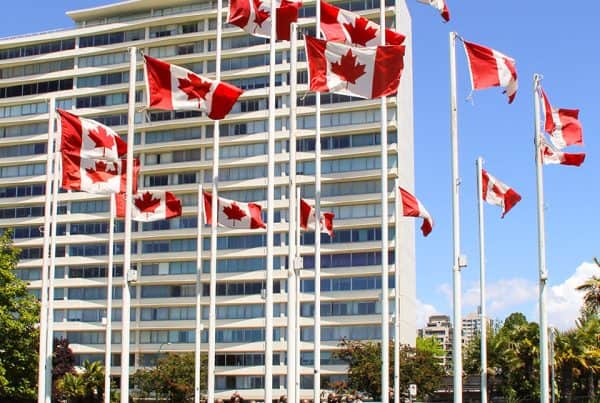Candidates aspiring to study abroad list Canada as a sought-after destination. Students look forward to the quality of studies they’ll get access to and the long-term opportunities that will unfold with a Post-Graduation Work Permit (PGWP). Getting a PGWP is an accomplishment for students, enabling them to get relevant work experience within Canada. It is a way to improve their chances of getting a permanent residency. However, students must know how to retain a PGWP if it expires soon. This blog post will explore extending a PGWP through the Express Entry system.
What is a PGWP?
A Post-Graduate Work Permit in Canada is an immigration document issued to foreign students who have completed their course at a designated learning institute (DLI) to get Canadian work experience. The PGWP’s validity depends on the study program’s length and can extend from eight months to three years. It enables the graduate to work in Canada and meet the qualifying requirements for Permanent Residency under the Canadian Qualifications Class using the Express Entry system.
What is Express Entry?
Express Entry is an online immigration application system that manages applications for permanent residency under three federal economic immigration programs:
- Federal Skilled Worker Program (FSWP)
- Federal Skilled Trades Program (FSTP)
- Canadian Experience Class (CEC)
The most suitable program for PGWP holders is usually the Canadian Experience Class, which targets people with skilled work experience in Canada.
Eligibility Criteria for the Canadian Experience Class
To be eligible for the Canadian Experience Class, you must meet the following criteria:
- Work Experience: You must have at least one year of experience as a skilled worker in Canada within the last three years. This experience must be in a National Occupational Classification (NOC) skill level 0, A, or B occupation.
- Language Proficiency: To qualify for the job, you must fulfill the language requirements. You must have minimum language proficiency in English or French. Language proficiency is tested through exams like IELTS and CELPIP for English and TEF for French.
- Education: The Canadian Experience Class has no specific education requirement; however, education obtained in Canada can boost your CRS points.
- Residence: You must prove your residence in Canada except for Quebec.
Steps to Apply for Express Entry
The application process for Express Entry is both straightforward and complicated. The candidate must provide accurate and complete information to receive an Invitation to Apply (ITA) from the IRCC. However, a summary of the application process includes:
- Evaluate Your Eligibility
Calculating your Comprehensive Ranking System (CRS) score can determine your eligibility. Based on the CRS, you can fill out the questionnaire on the official website and calculate the test results to determine the probability of receiving an ITA for permanent residence.
- Improve Your CRS Score
The CRS scores can be improved if they are below the cutoff. Here is how you can improve your CRS score:
- Language Scores: Sit for retakes on language tests to get better results.
- Education: Finish other educational courses/programs in Canada.
- Work Experience: Acquire more work experience in a skills trade occupation in Canada.
- Provincial Nominee Program: Some PNPs in some provinces also have add-ons that give extra points to the applicants.
- Prepare the Express Entry Profile
Once you know your eligibility, you must create an online Express Entry profile. The information you must input includes work experience, education, languages, and other personal data.
- Receive an Invitation to Apply
If your CRS score is high enough, you will be invited to apply during the usual round of the Express Entry draws. You will have 2 months or 60 days to submit a complete application for PR.
- Submit Your Application
The application can be submitted via the Internet, and the site may require uploading forms, proof of work experience, language test results, and educational documents. Pay the application fees and then wait for the decision.
The Next Steps: If Your PGWP Is About to Expire
As your PGWP expiry date approaches, here are crucial steps to consider:
- Assess Your Eligibility for Express Entry: Ensure you possess the CEC or other Express Entry routes requirements.
- Gather Necessary Documentation: Gather necessary documents for authentication, including proof of work experience, language test results, educational certificates, etc.
- Monitor Express Entry Draws: Check the cut-off scores for the CRS and keep updating your profile.
- Explore PNP Options: Search and send to doable PNPs that would help increase your CRS score.
- Consult with an Immigration Professional: An immigration consultant or an immigration lawyer can give individuals further advice and legal support in cases of PGWP expiry.
Ways to Extend Your Stay in Canada
While one waits for a PGWP extension, there are some ways to extend your stay in Canada, which include:
1. Bridging Open Work Permit (BOWP)
International students who have already applied for a PR and are having their PGWP expire soon can apply for a Bridging Open Work Permit (BOWP). This permit enables them to continue working in Canada while waiting for their PR application to be processed.
2. Provincial Nominee Program (PNP)
Many candidates score low on CRS when checking their eligibility for Express Entry, which leads to delays in creating an Express Entry Profile. Candidates experiencing this issue can try to register themselves under a Provincial Nominee Program. Territories and provinces across Canada offer unique PNPs for international students, which can increase their chances of getting a PR.
3. Extend Your Stay as a Visitor
If you do not qualify for a BOWP or get a provincial nomination, you can still file for a visitor visa to remain in Canada legally. This will not enable you to gain employment; nevertheless, it will allow you to seek other means of remaining in the country.
4. Return to School
The other option is to return to school and apply for another study permit. This will enable you to remain in Canada and, hopefully, apply for a new PGWP upon the end of your studies.
Conclusion
Managing an expiring PGWP can be somewhat complicated. Still, the Express Entry system offers one of the most straightforward ways for those who started with PGWP to get a permanent resident card in Canada. Thus, by studying the requirements carefully, increasing your CRS score, and researching all possible ways, one can enhance the probability of turning from a temporary work permit holder to a permanent resident of Canada.
For further information and advice, ImmigrationWay is one of the leading law firms dealing with immigration matters. We can help you decide how to proceed and what decisions to make regarding your future and life in Canada.





